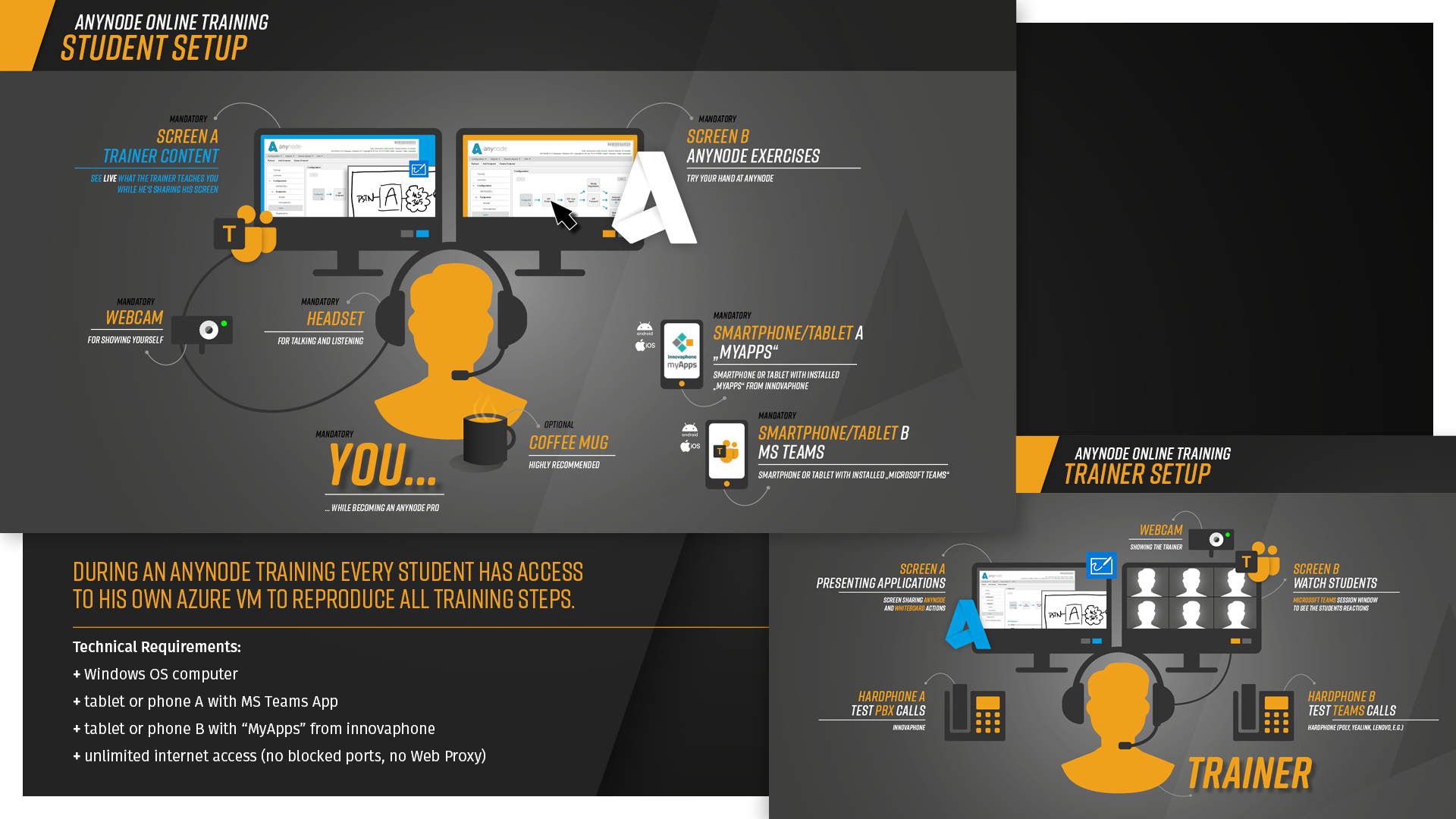
Language
The training material is in English. Communication between participants and the trainer will be conducted in English.


Ensuring high availability (HA) is one of the core requirements of modern communication infrastructures. This training guides you step by step through all relevant topics – from the fundamentals and practical setup to advanced scenarios involving external components and monitoring tools.
You will gain the knowledge and tools needed to design, build, and reliably operate highly available anynode environments. The training helps you prevent failure scenarios and configure systems to remain stable and operational even in case of errors.
This training is intended for administrators and advanced users who already have practical experience working with anynode and wish to deepen their knowledge in the area of high availability. Participants should be familiar with the anynode user interface and its basic functions.
Participation in this training requires successful completion of the anynode Basic Training.
This ensures that participants can fully understand and apply the advanced concepts and exercises on high availability.
You will receive a hands-on overview of the concepts, architectures, and configurations related to High Availability in anynode, including:
After completing this training, you will be able to independently implement and monitor a robust and redundant anynode environment.
Registrations are allowed until one week before the start of the training. If at least four people have not registered by this time, we reserve the right to cancel the training one week in advance. Participants who have registered in advance will be informed and, if necessary, an alternative date will be offered.
The number of participants for the anynode High Availability Online training is limited to six participants per training.
Pricing details for the anynode High Availability Training will be available soon.
The training material is in English. Communication between participants and the trainer will be conducted in English.